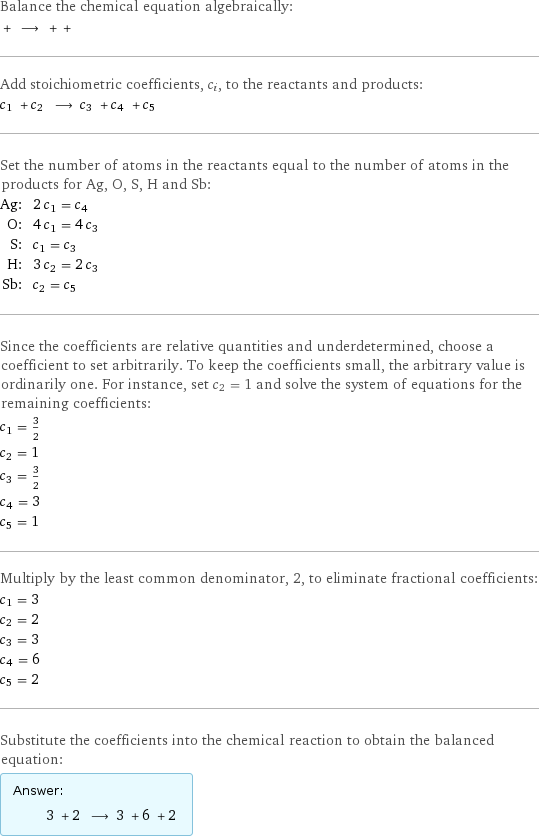Input interpretation

silver sulfate + stibine ⟶ sulfuric acid + silver + gray antimony
Balanced equation

Balance the chemical equation algebraically: + ⟶ + + Add stoichiometric coefficients, c_i, to the reactants and products: c_1 + c_2 ⟶ c_3 + c_4 + c_5 Set the number of atoms in the reactants equal to the number of atoms in the products for Ag, O, S, H and Sb: Ag: | 2 c_1 = c_4 O: | 4 c_1 = 4 c_3 S: | c_1 = c_3 H: | 3 c_2 = 2 c_3 Sb: | c_2 = c_5 Since the coefficients are relative quantities and underdetermined, choose a coefficient to set arbitrarily. To keep the coefficients small, the arbitrary value is ordinarily one. For instance, set c_2 = 1 and solve the system of equations for the remaining coefficients: c_1 = 3/2 c_2 = 1 c_3 = 3/2 c_4 = 3 c_5 = 1 Multiply by the least common denominator, 2, to eliminate fractional coefficients: c_1 = 3 c_2 = 2 c_3 = 3 c_4 = 6 c_5 = 2 Substitute the coefficients into the chemical reaction to obtain the balanced equation: Answer: | | 3 + 2 ⟶ 3 + 6 + 2
Structures

+ ⟶ + +
Names

silver sulfate + stibine ⟶ sulfuric acid + silver + gray antimony
Chemical names and formulas

| silver sulfate | stibine | sulfuric acid | silver | gray antimony Hill formula | Ag_2O_4S | H_3Sb | H_2O_4S | Ag | Sb name | silver sulfate | stibine | sulfuric acid | silver | gray antimony IUPAC name | disilver sulfate | | sulfuric acid | silver | antimony